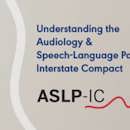
3 Ways to Accelerate Your Therapy Documentation
If you’re like me, writing is not what motivated you to become a therapist. But instead of spending all your time with patients, you find yourself behind a computer, typing up documentation, for many more hours than you expected.
Daily documentation is the bane of many a therapist’s career, but it can be critical for the patient’s success. When done well, therapy documentation can impact not only your patient’s progress but also your professional advancement.
In this post, I’ll offer 3 ways you can accelerate your therapy documentation from dull to deft. With a little planning and practice, you can transform rote and time-consuming notes into precise, professional documentation.
The Trials of Early Career Documentation
Early on in my career as a PT, I assumed that it was normal—even expected—that therapists spend an hour or two after work every day writing their notes. After all, that’s what I observed from my clinic rotations. But as I began writing my own documentation, I realized that the burden of note-writing has the potential to burn out even the most passionate of therapists. It’s a complex skill of writing, reporting, and communicating which most DPT programs overlook.
Almost immediately, I began reforming how I wrote notes. The efforts I made early on to streamline the process have helped me save valuable time generating high-quality, defensible documentation. Below are 3 ways you, too, can improve your documentation and fully embrace the writing side of your therapy career.
3 Ways to Improve Your Therapy Documentation
1. Volunteer for Chart Review
Remember peer review in English class, the opportunity to peek at someone else’s paper? Your clinic’s chart review is a similar process. Primarily used for insurance and quality control, the chart review is a periodic audit of a patient’s medical chart, encompassing their evaluation, assessment, and progress notes. If you work for an outpatient clinic, you may have the opportunity to volunteer for the chart review.
Besides checking for compliance with insurance requirements, reviewing other therapists’ charts can give you a fresh perspective on note-writing. As you comb through your colleagues’ notes, take time to notice how they write their documentation. You can learn a lot from a seasoned therapist’s written commentary—both how they treated the patient and how they reported it!
2. Create Note-Writing Quick Sheets
While point-of-service documentation has its place, sometimes it’s faster to just jot your assessment results down on a piece of paper. Values such as your patient’s range of motion or strength testing results are a snap to add later when you have the time to open the EMR or scroll through your notes.
And if a pad and pen aren’t your style, open a note on your phone or tablet. You can create a running quick sheet, saved to the cloud, for recording momentary insights you’ll need later when you type up your documentation.
Keeping a quick sheet is especially helpful when you’re learning a new documentation system. An unfamiliar EMR can bring with it a steep learning curve, which you may not have time to navigate when you’re with a patient. For travel therapists acclimating to changing work environments, an ever-ready quick sheet will help you stay organized and efficient with your notes.
With patient volumes high and climbing, there’s a pressing demand for your time as a therapist. That’s why working as efficiently as possible is critical to your success—and sanity. Maximize your time with your patient and keep your notepad handy; it’ll expedite your documentation process later.
3. Key Phrases and Hot Keys
One of the biggest complaints I hear about documentation isn’t necessarily that it’s hard but that it’s so repetitive. If you find yourself writing the same phrases over and over, it may be worth setting up a few key phrase shortcuts.
First, write down phrases you use regularly in the clinic. You can do this by simply pasting those commonly-used phrases into a quick sheet whenever you write your notes. When you’re ready to set up the shortcuts, look over the phrases you saved and ensure they read well. Then check your computer or tablet for “hotkeys,” a feature similar to autocorrect that can replace a shortcut word or phrase with a previously typed string of text. With hotkeys or their equivalent, you’ll only have to write that common phrase once—to program it—and thenceforth only use its shortcut.
A few therapy EMR companies have begun incorporating keyphrase shortcuts for pre-saved text. For example, in the Stride therapy EMR, I can program common goals or treatment phrases with quick shortcuts, easily saving me 20–30 seconds of typing. While that may not seem like a lot of time, even seconds of typing saved can add up to 10–15 minutes a day or more.
Therapy Documentation Templates and Phrases
Need more help writing good notes? Take a look at my documentation templates and example phrases. These cheat sheets will give you a framework for crafting well-written therapy notes populated with concise, defensible phrasing.
Tim Fraticelli is a Physical Therapist, Certified Financial Planner™, and founder of PTProgress.com. He loves to teach PTs and OTs ways to save time and money in and out of the clinic, especially when it comes to therapy documentation or continuing education. Follow him on YouTube for weekly videos on ways to improve your physical and financial health.




